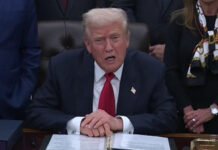INVC News
San Francisco : The Apple CEO Tim Cook has taken a firm stance against US political pressure to shift iPhone manufacturing from India to the United States. Amid ongoing speculation and rising political rhetoric, industry experts warn that such a move could result in severe financial repercussions for the tech giant and disrupt the strategic momentum India has built as a manufacturing hub.
According to a report by Ajay Srivastava, founder of the Global Trade Research Initiative (GTRI), relocating iPhone assembly to the US would significantly reduce Apple’s profit margins. The company currently assembles approximately 15% of its iPhones in India, with the remaining share still being produced in China. While India’s share may seem small in volume, its strategic importance is growing rapidly as the country ramps up infrastructure and offers incentives under the Production-Linked Incentive (PLI) scheme.
Srivastava highlights that India earns less than $30 per iPhone assembled—most of which is routed back to Apple via government subsidies. The real profit lies in branding, design, software, and advanced components, most of which are developed in the United States, Taiwan, South Korea, and Japan. For example, Apple retains nearly $450 of the retail value of a $1,000 iPhone. US-based suppliers like Qualcomm and Broadcom earn another $80, Taiwan adds $150, South Korea contributes $90, and Japan adds $85 in value.
Countries like Germany, Vietnam, and Malaysia also supply small parts worth up to $45, but the assembly line nations like India and China only receive $30, or less than 3% of the total value. Despite the low monetary return, the employment impact is significant. India and China together employ more than 360,000 workers on iPhone assembly lines—jobs that would be difficult and expensive to replicate in the United States.
Trump’s demand for Apple to manufacture iPhones domestically is not rooted in tech innovation but rather in job creation, say experts. The former US president has repeatedly emphasized the need to bring blue-collar manufacturing jobs back to American soil, particularly during election cycles. His statements are aimed at boosting domestic employment numbers, not necessarily enhancing high-tech capabilities.
Apple’s reluctance stems from the stark economic contrast. Assembly workers in India earn an average of $290 per month, compared to an estimated $2,900 per month in the US. That wage difference would drive up the cost of assembling each iPhone by $360, bringing total production costs close to $390 per unit. Consequently, Apple’s per unit profit could plummet from $450 to just $60, unless the company raises retail prices—an unattractive proposition amid concerns over inflation and consumer fatigue in the US.
Trade analysts suggest that Trump’s push may also be part of a broader trade negotiation strategy. Notably, the former president hasn’t made similar demands about Apple’s operations in China, where the vast majority of iPhones are still made. This selective pressure has raised eyebrows among global trade observers and added complexity to US-India economic diplomacy.
India, on the other hand, sees Apple’s growing footprint as a long-term opportunity. With its no-tariff offer and infrastructure readiness, India is positioning itself to become a global manufacturing powerhouse. If Apple continues expanding in India, it could stimulate growth in ancillary industries, generate thousands of jobs, and reduce dependency on China for electronics manufacturing.
During a recent address on his state visit to Qatar, Donald Trump confirmed a disagreement with Tim Cook. “He is setting up operations all over India. I told him I don’t want you to manufacture in India. India can take care of itself,” Trump remarked, signaling clear opposition to Apple’s overseas manufacturing expansion, especially in South Asia.
As geopolitical tensions rise and election-year policies harden, Apple finds itself balancing between patriotism and profitability. While Trump champions domestic assembly as a political win, Apple is guided by cost efficiency, global logistics, and shareholder value.
Apple’s decision to continue expanding in India reflects a calculated strategy to preserve margins, secure supply chains, and tap into one of the world’s most promising electronics manufacturing ecosystems. Whether this standoff with US political leadership deepens or evolves into a trade compromise remains to be seen, but for now, Tim Cook has made his priorities clear—and they lie firmly in India.
















